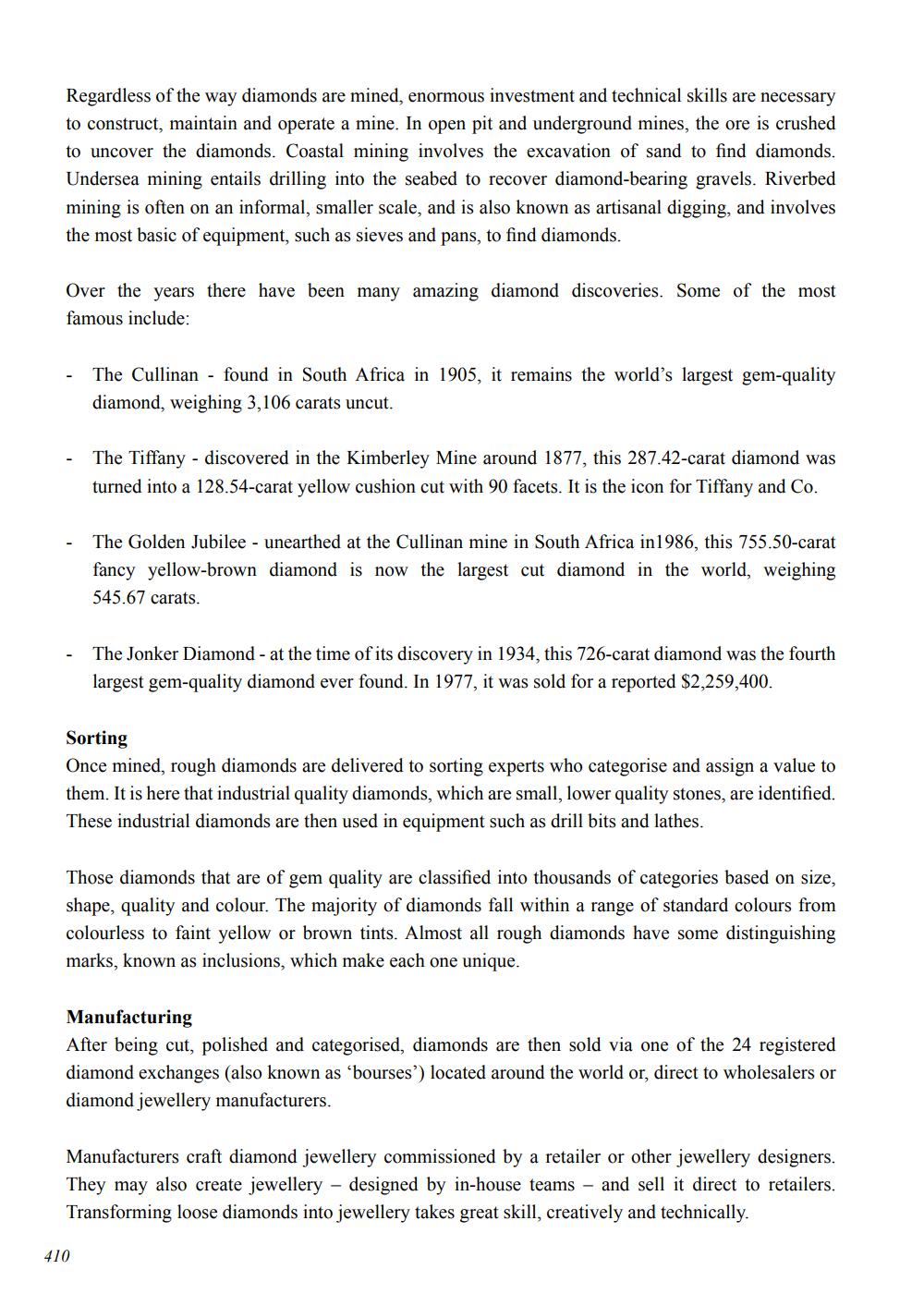________________
Regardless of the way diamonds are mined, enormous investment and technical skills are necessary to construct, maintain and operate a mine. In open pit and underground mines, the ore is crushed to uncover the diamonds. Coastal mining involves the excavation of sand to find diamonds. Undersea mining entails drilling into the seabed to recover diamond-bearing gravels. Riverbed mining is often on an informal, smaller scale, and is also known as artisanal digging, and involves the most basic of equipment, such as sieves and pans, to find diamonds.
Over the years there have been many amazing diamond discoveries. Some of the most famous include:
The Cullinan found in South Africa in 1905, it remains the world's largest gem-quality diamond, weighing 3,106 carats uncut.
The Tiffany - discovered in the Kimberley Mine around 1877, this 287.42-carat diamond was turned into a 128.54-carat yellow cushion cut with 90 facets. It is the icon for Tiffany and Co.
The Golden Jubilee unearthed at the Cullinan mine in South Africa in1986, this 755.50-carat fancy yellow-brown diamond is now the largest cut diamond in the world, weighing 545.67 carats.
The Jonker Diamond - at the time of its discovery in 1934, this 726-carat diamond was the fourth largest gem-quality diamond ever found. In 1977, it was sold for a reported $2,259,400.
Sorting
Once mined, rough diamonds are delivered to sorting experts who categorise and assign a value to them. It is here that industrial quality diamonds, which are small, lower quality stones, are identified. These industrial diamonds are then used in equipment such as drill bits and lathes.
410
Those diamonds that are of gem quality are classified into thousands of categories based on size, shape, quality and colour. The majority of diamonds fall within a range of standard colours from colourless to faint yellow or brown tints. Almost all rough diamonds have some distinguishing marks, known as inclusions, which make each one unique.
Manufacturing
After being cut, polished and categorised, diamonds are then sold via one of the 24 registered diamond exchanges (also known as 'bourses') located around the world or, direct to wholesalers or diamond jewellery manufacturers.
Manufacturers craft diamond jewellery commissioned by a retailer or other jewellery designers. They may also create jewellery - designed by in-house teams and sell it direct to retailers. Transforming loose diamonds into jewellery takes great skill, creatively and technically.




